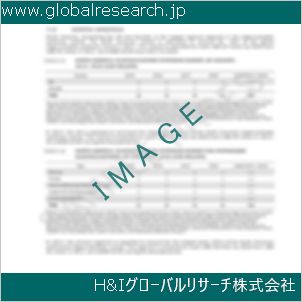Table of Contents
1 Industry Overview of Hydrobromicacid
1.1 Definition and Specifications of Hydrobromicacid
1.1.1 Definition of Hydrobromicacid
1.1.2 Specifications of Hydrobromicacid
1.2 Classification of Hydrobromicacid
1.3 Applications of Hydrobromicacid
1.3.1 Nuclear Application
1.3.2 Non-Nuclear Application
1.4 Industry Chain Structure of Hydrobromicacid
1.5 Industry Overview and Major Regions Status of Hydrobromicacid
1.5.1 Industry Overview of Hydrobromicacid
1.5.2 Global Major Regions Status of Hydrobromicacid
1.6 Industry Policy Analysis of Hydrobromicacid
1.7 Industry News Analysis of Hydrobromicacid
2 Manufacturing Cost Structure Analysis of Hydrobromicacid
2.1 Raw Material Suppliers and Price Analysis of Hydrobromicacid
2.2 Equipment Suppliers and Price Analysis of Hydrobromicacid
2.3 Labor Cost Analysis of Hydrobromicacid
2.4 Other Costs Analysis of Hydrobromicacid
2.5 Manufacturing Cost Structure Analysis of Hydrobromicacid
2.6 Manufacturing Process Analysis of Hydrobromicacid
3 Technical Data and Manufacturing Plants Analysis of Hydrobromicacid
3.1 Capacity and Commercial Production Date of Global Hydrobromicacid Major Manufacturers in 2023
3.2 Manufacturing Plants Distribution of Global Hydrobromicacid Major Manufacturers in 2023
3.3 R&D Status and Technology Source of Global Hydrobromicacid Major Manufacturers in 2023
3.4 Raw Materials Sources Analysis of Global Hydrobromicacid Major Manufacturers in 2023
4 Capacity, Production and Revenue Analysis of Hydrobromicacid by Regions, Types and Manufacturers
4.1 Global Capacity, Production and Revenue of Hydrobromicacid by Regions 2019-2024
4.2 Global and Major Regions Capacity, Production, Revenue and Growth Rate of Hydrobromicacid 2019-2024
4.3 Global Capacity, Production and Revenue of Hydrobromicacid by Types 2019-2024
4.4 Global Capacity, Production and Revenue of Hydrobromicacid by Manufacturers 2019-2024
5 Price, Cost, Gross and Gross Margin Analysis of Hydrobromicacid by Regions, Types and Manufacturers
5.1 Price, Cost, Gross and Gross Margin Analysis of Hydrobromicacid by Regions 2019-2024
5.2 Price, Cost, Gross and Gross Margin Analysis of Hydrobromicacid by Types 2019-2024
5.3 Price, Cost, Gross and Gross Margin Analysis of Hydrobromicacid by Manufacturers 2019-2024
6 Consumption Volume, Consumption Value and Sale Price Analysis of Hydrobromicacid by Regions, Types and Applications
6.1 Global Consumption Volume and Consumption Value of Hydrobromicacid by Regions 2019-2024
6.2 Global and Major Regions Consumption Volume, Consumption Value and Growth Rate of Hydrobromicacid 2019-2024
6.3 Global Consumption Volume and Consumption Value of Hydrobromicacid by Types 2019-2024
6.4 Global Consumption Volume and Consumption Value of Hydrobromicacid by Applications 2019-2024
6.5 Sale Price of Hydrobromicacid by Regions 2019-2024
6.6 Sale Price of Hydrobromicacid by Types 2019-2024
6.7 Sale Price of Hydrobromicacid by Applications 2019-2024
6.8 Market Share Analysis of Hydrobromicacid by Different Sale Price Levels
7 Supply, Import, Export and Consumption Analysis of Hydrobromicacid
7.1 Supply, Consumption and Gap of Hydrobromicacid 2019-2024
7.2 Global Capacity, Production, Price, Cost, Revenue, Supply, Import, Export and Consumption of Hydrobromicacid 2019-2024
7.3 USA Capacity, Production, Price, Cost, Revenue, Supply, Import, Export and Consumption of Hydrobromicacid 2019-2024
7.4 EU Capacity, Production, Price, Cost, Revenue, Supply, Import, Export and Consumption of Hydrobromicacid 2019-2024
7.5 China Capacity, Production, Price, Cost, Revenue, Supply, Import, Export and Consumption of Hydrobromicacid 2019-2024
7.6 Japan Capacity, Production, Price, Cost, Revenue, Supply, Import, Export and Consumption of Hydrobromicacid 2019-2024
8 Major Manufacturers Analysis of Hydrobromicacid
8.1 Manufacturer One
8.1.1 Company Profile
8.1.2 Product Picture and Specifications
8.1.2.1 Type I
8.1.2.2 Type II
8.1.2.3 Type III
8.1.3 Capacity, Production, Price, Cost, Gross and Revenue
8.1.4 Contact Information
8.2 Manufacturer Two
8.2.1 Company Profile
8.2.2 Product Picture and Specifications
8.2.2.1 Type I
8.2.2.2 Type II
8.2.2.3 Type III
8.2.3 Capacity, Production, Price, Cost, Gross and Revenue
8.2.4 Contact Information
8.3 Manufacturer Three
8.3.1 Company Profile
8.3.2 Product Picture and Specifications
8.3.2.1 Type I
8.3.2.2 Type II
8.3.2.3 Type III
8.3.3 Capacity, Production, Price, Cost, Gross and Revenue
8.3.4 Contact Information
8.4 Manufacturer Four
8.4.1 Company Profile
8.4.2 Product Picture and Specifications
8.4.2.1 Type I
8.4.2.2 Type II
8.4.2.3 Type III
8.4.3 Capacity, Production, Price, Cost, Gross and Revenue
8.4.4 Contact Information
8.5 Manufacturer Five
8.5.1 Company Profile
8.5.2 Product Picture and Specifications
8.5.2.1 Type I
8.5.2.2 Type II
8.5.2.3 Type III
8.5.3 Capacity, Production, Price, Cost, Gross and Revenue
8.5.4 Contact Information
…
9 Marketing Trader or Distributor Analysis of Hydrobromicacid
9.1 Marketing Channels Status of Hydrobromicacid
9.2 Traders or Distributors with Contact Information of Hydrobromicacid by Regions
9.3 Ex-work Price, Channel Price and End Buyer Price Analysis of Hydrobromicacid
9.4 Regional Import, Export and Trade Analysis of Hydrobromicacid
10 Industry Chain Analysis of Hydrobromicacid
10.1 Upstream Major Raw Materials Suppliers Analysis of Hydrobromicacid
10.1.1 Major Raw Materials Suppliers with Contact Information Analysis of Hydrobromicacid
10.1.2 Major Raw Materials Suppliers with Supply Volume Analysis of Hydrobromicacid by Regions
10.2 Upstream Major Equipment Suppliers Analysis of Hydrobromicacid
10.2.1 Major Equipment Suppliers with Contact Information Analysis of Hydrobromicacid
10.2.2 Major Equipment Suppliers with Product Pictures Analysis of Hydrobromicacid by Regions
10.3 Downstream Major Consumers Analysis of Hydrobromicacid
10.3.1 Major Consumers with Contact Information Analysis of Hydrobromicacid
10.3.2 Major Consumers with Consumption Volume Analysis of Hydrobromicacid by Regions
10.4 Supply Chain Relationship Analysis of Hydrobromicacid
11 Development Trend of Analysis of Hydrobromicacid
11.1 Capacity, Production and Revenue Forecast of Hydrobromicacid by Regions and Types
11.1.1 Global Capacity, Production and Revenue of Hydrobromicacid by Regions 2024-2029
11.1.2 Global and Major Regions Capacity, Production, Revenue and Growth Rate of Hydrobromicacid 2024-2029
11.1.3 Global Capacity, Production and Revenue of Hydrobromicacid by Types 2024-2029
11.2 Consumption Volume and Consumption Value Forecast of Hydrobromicacid by Regions, Types and Applications
11.2.1 Global Consumption Volume and Consumption Value of Hydrobromicacid by Regions 2024-2029
11.2.2 Global and Major Regions Consumption Volume, Consumption Value and Growth Rate of Hydrobromicacid 2024-2029
11.2.3 Global Consumption Volume and Consumption Value of Hydrobromicacid by Types 2024-2029
11.2.4 Global Consumption Volume and Consumption Value of Hydrobromicacid by Applications 2024-2029
11.3 Supply, Import, Export and Consumption Forecast of Hydrobromicacid
11.3.1 Supply, Consumption and Gap of Hydrobromicacid 2024-2029
11.3.2 Global Capacity, Production, Price, Cost, Revenue, Supply, Import, Export and Consumption of Hydrobromicacid 2024-2029
11.3.3 USA Capacity, Production, Price, Cost, Revenue, Supply, Import, Export and Consumption of Hydrobromicacid 2024-2029
11.3.4 EU Capacity, Production, Price, Cost, Revenue, Supply, Import, Export and Consumption of Hydrobromicacid 2024-2029
11.3.5 China Capacity, Production, Price, Cost, Revenue, Supply, Import, Export and Consumption of Hydrobromicacid 2024-2029
11.3.6 Japan Capacity, Production, Price, Cost, Revenue, Supply, Import, Export and Consumption of Hydrobromicacid 2024-2029
12 New Project Investment Feasibility Analysis of Hydrobromicacid
12.1 New Project SWOT Analysis of Hydrobromicacid
12.2 New Project Investment Feasibility Analysis of Hydrobromicacid
13 Conclusion of the Global Hydrobromicacid (CAS 10035-10-6) Industry 2024 Market Research Report
| ※参考情報 臭化水素酸(Hydrobromic acid)は、化学式 HBr で表される無色から淡黄色の腐食性の強い酸であり、常温で気体の状態で存在しますが、水に溶解すると強酸性の液体となります。この酸は臭化水素(HBr)が水に溶解することで生成されるため、酸とはいえ、根本的にはその形態を変えた分子の集合体であると言えます。ここでは、臭化水素酸の定義、特徴、種類、用途、関連技術について詳しく説明します。 臭化水素酸の定義についてですが、これは臭化水素ガスが水に溶解したときに生成される酸のことを指します。水に溶解的に進行するため、強酸としての特性を示します。溶解した水中のHBrは、H⁺とBr⁻に完全に解離し、強い酸性を示す要因となります。 臭化水素酸の特徴としては、まずその強い酸性が挙げられます。pH値は通常1未満であり、強い腐食性を持っています。これは多くの金属や有機材料を劣化させる可能性があるため、取り扱いには注意が必要です。また、臭化水素は刺激臭があり、吸引すると呼吸器に悪影響を及ぼすことがあります。そのため、安全対策として、常に適切な防護具を着用することが推奨されます。 臭化水素酸は、無水物である臭化水素ガスと水の反応によって簡単に生成されます。これは、化学的に安定した物質であり、比較的容易に入手可能です。臭化水素は、化学的性質としては、他のブロミウム化合物と似通った特徴を持っていますが、酸性度においてはフッ化水素酸や塩酸に次ぐ強さを誇ります。 臭化水素酸の種類についてですが、一般的には濃度によって分類されます。通常の濃度(約48%)のものは、工業用で広く使用されます。一方、特殊な用途のためにさらに希釈されたバリエーションや、特定の目的に合わせて調整された製品も存在します。これにより、様々な工業プロセスや実験に応じて使いやすい形で提供されます。 用途としては、臭化水素酸は広範囲に利用されています。一例として、化学合成や製造プロセスにおける触媒としての役割が挙げられます。特に医薬品や農薬の生産において、ブロミウム化合物の合成材料として重要です。また、臭化水素酸は分析化学においても利用され、多くの化合物の質量分析や分光分析において使われています。 さらに、臭化水素酸は水質の調整や工業廃水の処理においても重要な役割を果たします。重金属や有機物の除去に関与することができ、環境保護の観点からもその使用が注目されています。特に、臭化水素酸はブロミウム化合物の合成に利用されるため、重要な中間体として扱われます。 関連技術としては、臭化水素酸を利用した化学合成技術、触媒技術、そしてその取り扱いや性質に関する研究が進められています。また、この酸はブロミウムの供給源としても機能し、新型のブロミウム化合物の開発に寄与しています。近年では、その利用範囲が広がる一方で、環境への影響を考慮した持続可能な技術の導入も模索されています。 最後に、臭化水素酸はその強い腐食性や毒性から取り扱いには細心の注意を払う必要があります。取り扱う際には適切な安全対策を講じ、保護具を着用することが求められます。また、用途に応じた適切な濃度で使用することが重要です。これにより、科学的利用のみならず、産業用途においてもその利便性が保たれることでしょう。 以上のように、臭化水素酸は非常に多様な応用を持つ化学物質であり、その特性を理解することは化学業界において重要です。適切な知識と技術を持って安全に取り扱うことが、今後の研究や産業の発展に寄与することでしょう。 |
❖ 免責事項 ❖
http://www.globalresearch.jp/disclaimer


-gr.jpg)









